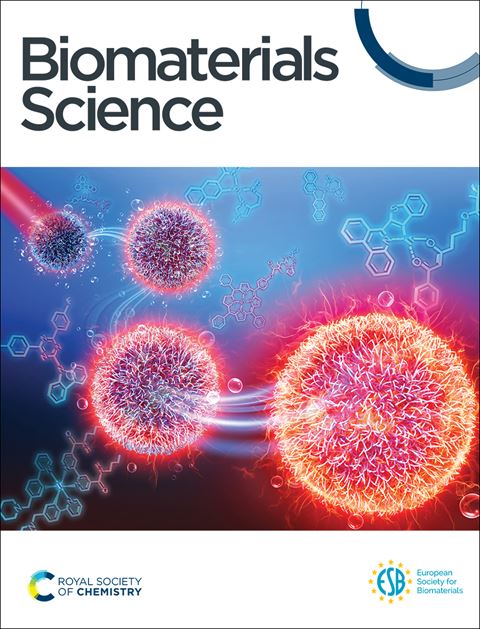Porous organic polymers for drug delivery: hierarchical pore structures, variable morphologies, and biological properties
IF 5.7
3区 医学
Q1 MATERIALS SCIENCE, BIOMATERIALS
引用次数: 48
Abstract
Porous organic polymers have received considerable attention in recent years because of their applicability as biomaterials. In particular, their hierarchical pore structures, variable morphologies, and tunable biological properties make them suitable as drug-delivery systems. In this review, the synthetic and post forming/control methods including templated methods, template-free methods, mechanical methods, electrospun methods, and 3D printing methods for controlling the hierarchical structures and morphologies of porous organic polymers are discussed, and the different methods affecting their specific surface areas, hierarchical structures, and unique morphologies are highlighted in detail. In addition, we discuss their applications in drug encapsulation and the development of stimuli (pH, heat, light, and dual-stimuli)-responsive materials, focusing on their use for targeted drug release and as therapeutic agents. Finally, we present an outlook concerning the research directions and applications of porous polymer-based drug delivery systems.

用于药物递送的多孔有机聚合物:分层孔结构、可变形态和生物特性
多孔有机聚合物由于其作为生物材料的适用性,近年来受到了广泛的关注。特别是,它们的分层孔结构,可变形态和可调的生物学特性使它们适合作为药物传递系统。本文综述了多孔有机聚合物的合成和成型后控制方法,包括模板法、无模板法、机械法、静电纺丝法和3D打印法,并详细介绍了影响多孔有机聚合物比表面积、层次结构和独特形貌的不同方法。此外,我们还讨论了它们在药物包封和刺激(pH、热、光和双刺激)响应材料的开发中的应用,重点是它们在靶向药物释放和治疗剂中的应用。最后,对多孔聚合物给药系统的研究方向和应用前景进行了展望。
本文章由计算机程序翻译,如有差异,请以英文原文为准。
求助全文
约1分钟内获得全文
求助全文
来源期刊

Biomaterials Science
MATERIALS SCIENCE, BIOMATERIALS-
CiteScore
11.50
自引率
4.50%
发文量
556
期刊介绍:
Biomaterials Science is an international high impact journal exploring the science of biomaterials and their translation towards clinical use. Its scope encompasses new concepts in biomaterials design, studies into the interaction of biomaterials with the body, and the use of materials to answer fundamental biological questions.
 求助内容:
求助内容: 应助结果提醒方式:
应助结果提醒方式:


